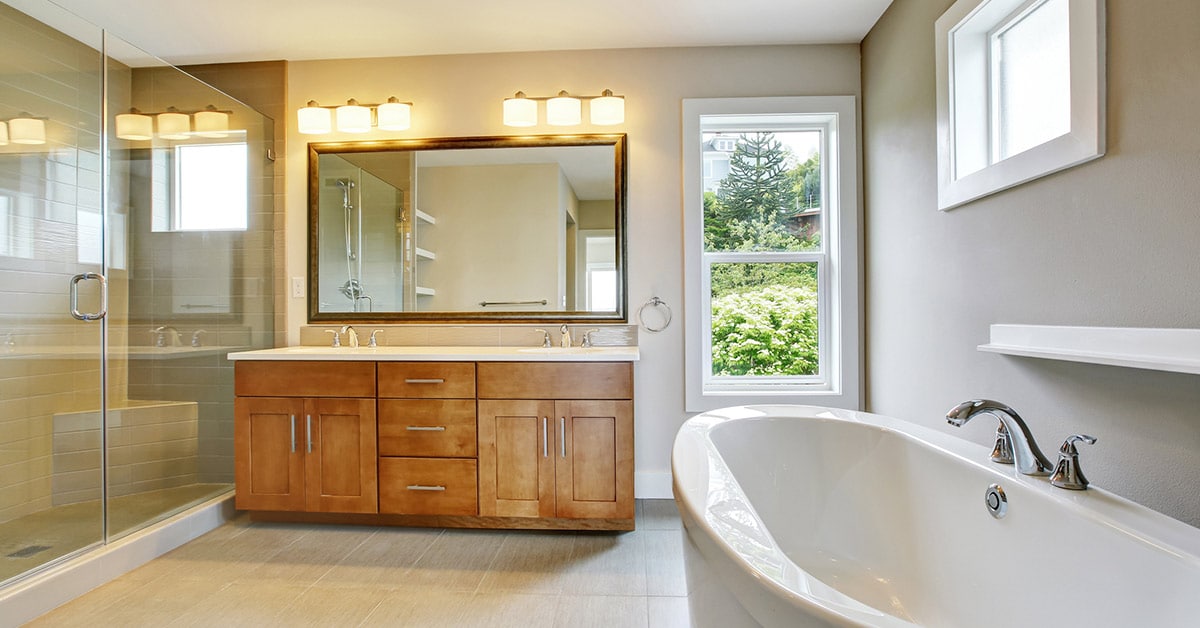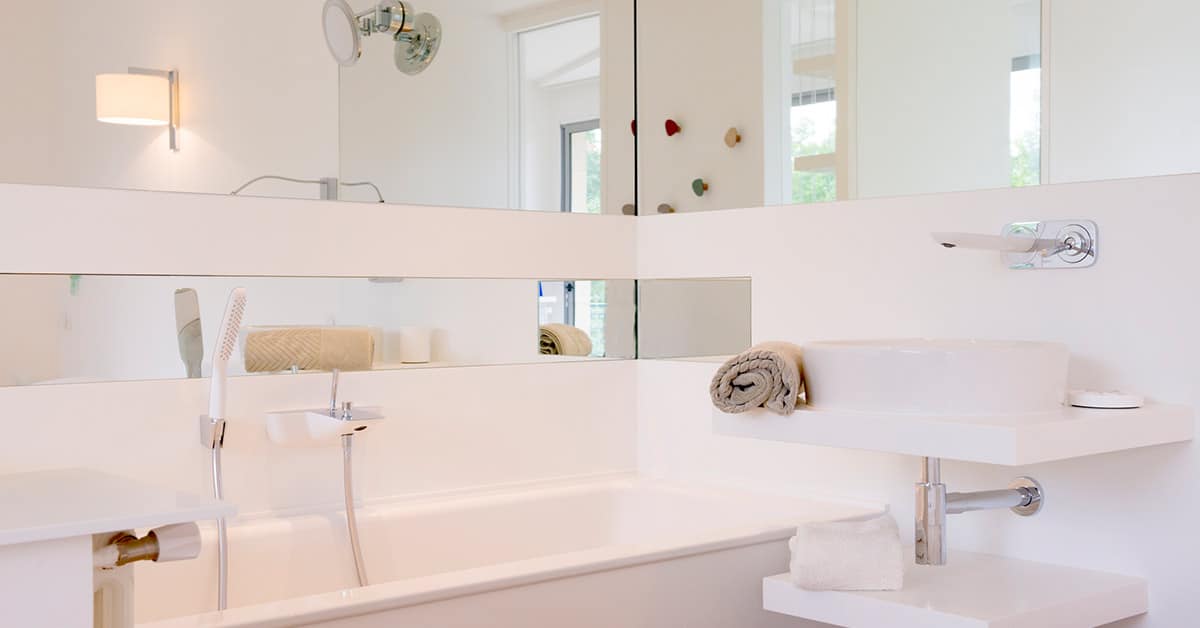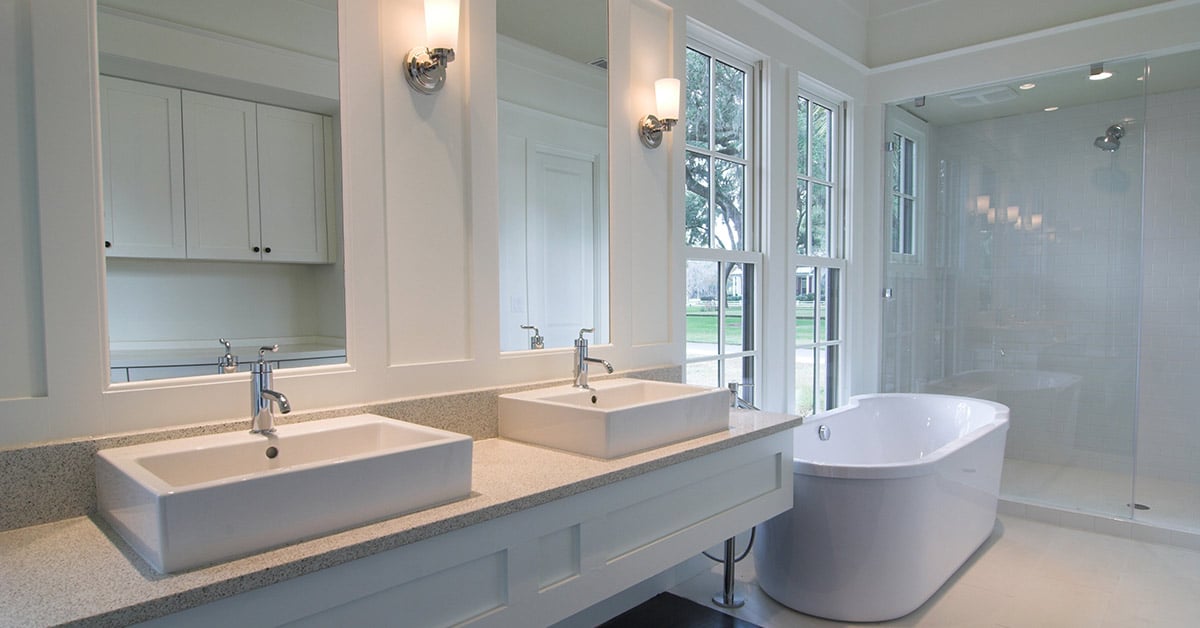Do you need a bathroom upgrade that works for everyone? Keep in mind that accessibility needs vary widely. What may help someone who uses a walker might be completely different from what a wheelchair user requires.
Good design looks at what you need now and what you might need later, keeping you safe, comfortable, and independent. Below, we’ll discuss the basics involved with a bathroom remodel for seniors.
Figure Out What You Really Need
Before tearing down walls, ask yourself these questions:
- What do I struggle with in the bathroom?
- Do I want a tub or shower?
- Will I need room for medical supplies or a walker?
- Where would grab bars help me?
Understanding how you use your bathroom today and how that might change lets you create a space that works for years to come.
Rethinking Your Space
Having room to move matters. If you use a wheelchair, you need enough space to turn around. That’s about 60 inches across. Doorways should be at least 32 inches wide or 36 inches if you’re coming in from a corner. When space is tight, doors that swing outward can be game changers.
Altering the height of bathroom features makes a big difference too. Toilets that sit 17-19 inches off the floor are easier to use if you have mobility issues. For those who have problems bending over, higher toilets (or adding a seat with arms) help with sitting down and getting up.
Sinks work best when they’re no higher than 34 inches and have space underneath for a wheelchair if needed. Wall-mounted sinks are a great option when looking for a solution.

Making Bathing Safer
Showers can be danger zones, but a few changes make them much safer. Showers without lips or curbs eliminate tripping hazards and let wheelchairs or walkers roll right in. You can also add a bench (17-19 inches high) so you can sit while washing. If you’re sticking with a tub, look into walk-in bathtubs with built-in seats.
Keep independent bathing easy by putting faucets and shower heads where you can comfortably reach them while sitting. Finally, make sure your floors aren’t slippery. Rough tiles or wooden bath slats are great solutions.
Smart Storage and Better Lighting
Accessible storage might mean lower shelves or drawers that pull out. Plan easy-access spots for medications or medical equipment, thinking ahead even if you don’t need these features right away.
Everything should be easy to reach without stretching or bending too much. Along with this, motion-sensing lights or switches placed lower on the wall make navigating the bathroom safer, especially at night.

Safety Above All
Rethink Bath Mats
Bath mats can be significant tripping hazards. Plus, they can get caught on wheelchairs or walkers. For this reason, we recommend skipping those altogether. Instead, focus on installing proper non-slip flooring throughout the entire bathroom that provides traction when wet but doesn’t create any raised edges or obstacles.
Install Grab Bars
An easy way to make any bathroom more accessible is to install grab bars by the toilet, in the shower, and anywhere extra support may be needed. Make sure they’re properly anchored into wall studs. This way, they can support weight when you need it the most.
Lower Water Heater Temperatures
Set your water heater temperature lower to prevent burns. Most water heaters are set at 140°F, so you’ll want to aim for around 120°F. This temperature is hot enough to shower comfortably, but it’s not so hot it’ll scald you if you can’t get out of the spray quickly.

Bottom Line
Making a bathroom more accessible isn’t just checking boxes. It’s about creating a space where everyone feels safe and independent. All these little touches matter, whether it’s hanging a sink on the wall, making sure there’s enough space to maneuver a wheelchair, or adding a seat in the shower.
Do it right, and your bathroom renovation won’t just spruce up your home. It’ll make your day-to-day life much easier.
Ready to get started with bathroom remodeling in Albany, OR, or the surrounding areas? Call us today at (541) 926-4597, or contact us for a free estimate.

